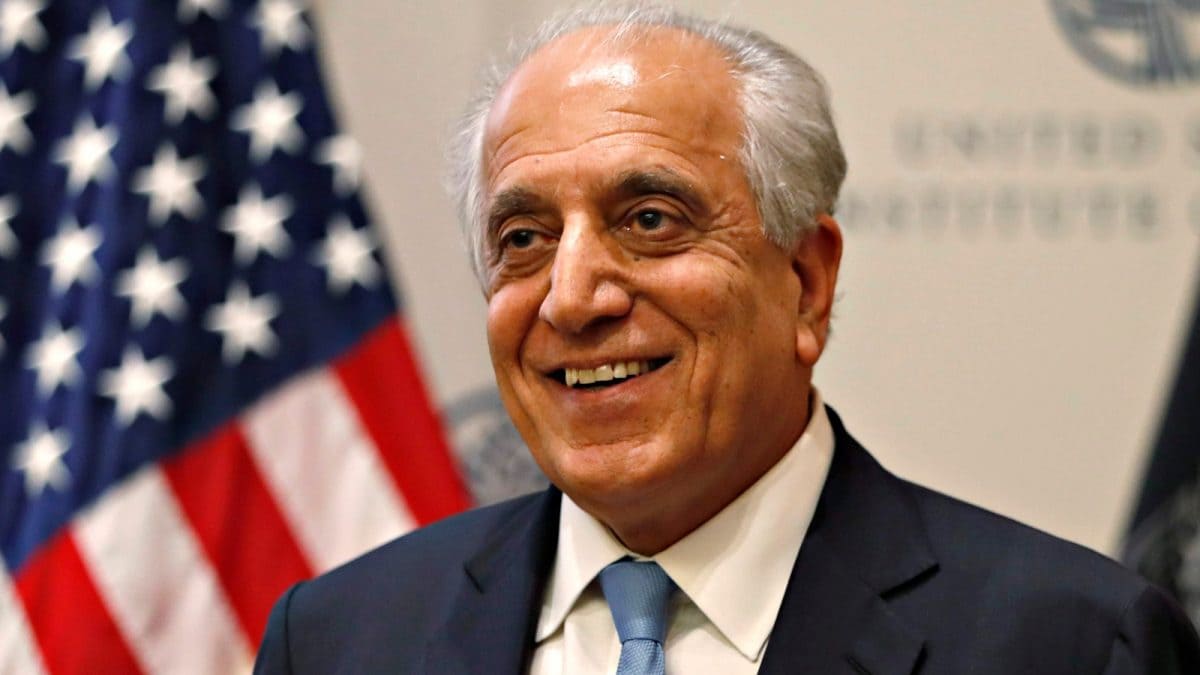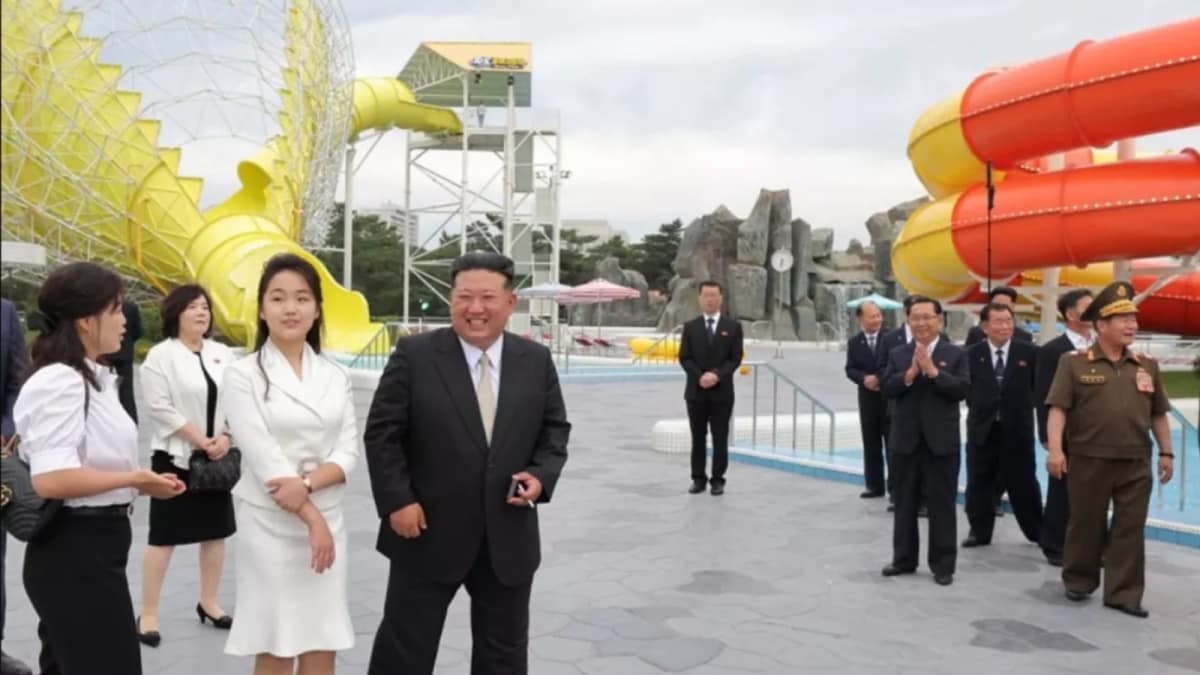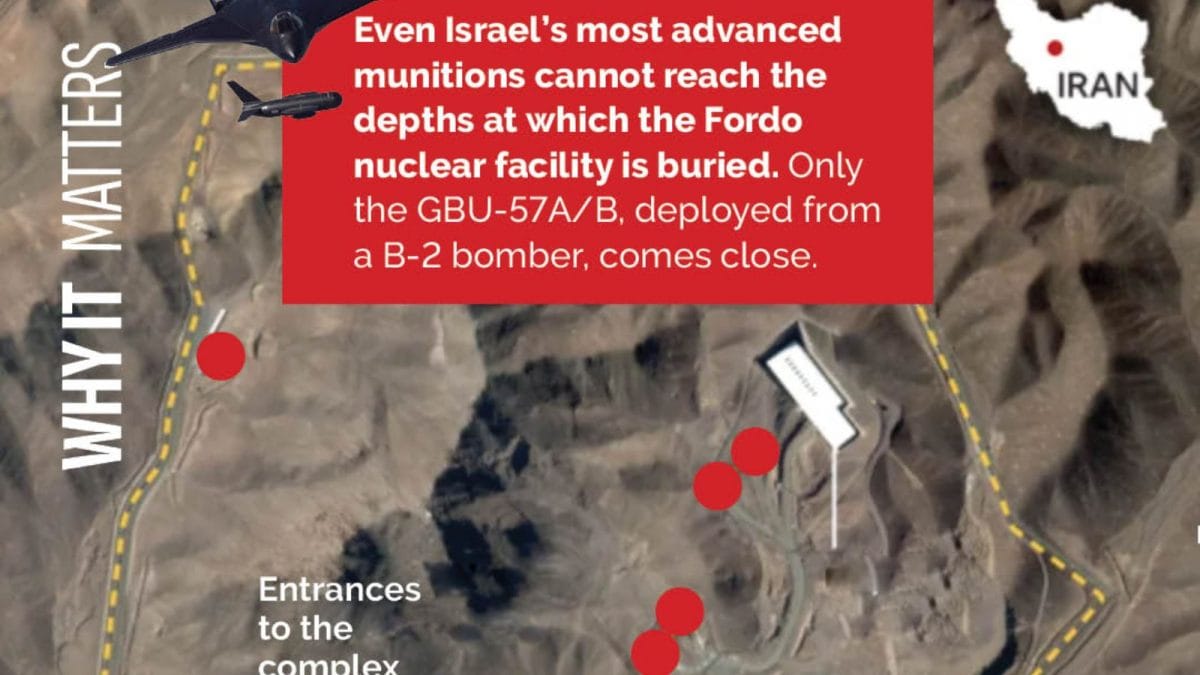Last Updated:June 27, 2025, 13:53 IST
Caine described Operation Midnight Hammer as the result of 15 years of intense preparation

Bunker buster
“Bunker bombs" used by the United States last week to strike Iran’s Fordow nuclear fuel enrichment plant were under production for 15 years before the US even knew about the extent of the Tehran threat.
The US struck three nuclear sites in Iran on June 21 using powerful bunker-busting bombs, marking the first use of weapon was used in combat for the first time.
Chairman of the Joint Chiefs of Staff Lt. Gen. Dan Caine has said that the heavy-duty bunker bombs used were designed specifically for the deeply buried site.
Even though the US first learnt about the Fordow plant in 2009, it could not act due to the unavailability of a “weapon that could adequately strike and kill this target," Caine said, the New York Post reported.
What Is GBU-57, The ‘Bunker-Buster’ Bomb Used By US To Strike Iran’s Nuclear Facilities?
This situation forced the US to produce 30,000-pound GBU-57 series MOP (Massive Ordnance Penetrator) bunker-buster bombs.
The June 21 strike was meticulously crafted by the Pentagon to meet the precise demands of targeting Iran’s Fordow facility. The operation focused on two key ventilation shafts intended to guide the bunker-busting bombs deep into the underground site.
According to Caine, Iranian forces had tried to defend the shafts by sealing them with concrete.
“The mission planners had anticipated this scenario — they prepared for every detail," he said. “The initial weapon forcibly removed the concrete covering, exposing the main shaft beneath."
The mission required four bombs to successfully enter the primary exhaust shaft, descend through the facility at speeds exceeding 1,000 feet per second, and detonate within the designated mission area.
Caine described Operation Midnight Hammer as the result of 15 years of intense preparation — from the air and tanker crews to the weapons teams that designed and assembled the munitions, and the load crews who made the strike possible.
All About GBU-57 – Bunker Bombs
The GBU-57 — also named Massive Ordnance Penetrator — is designed to penetrate up to 200 feet (60 meters) underground before exploding.
“To defeat these deeply buried targets, these weapons need to be designed with rather thick casings of steel, hardened steel, to sort of punch through these layers of rock," said Masao Dahlgren, of the Center for Strategic and Studies (CSIS), a Washington-based research center.
The 6.6-meter-long GBU-57 also has a specialized fuse as “you need an explosive that’s not going to immediately explode under that much shock and pressure," Dahlgren said.
The only aircraft capable of deploying the GBU-57 is the B-2 Spirit, a stealth bomber.
The US employed seven B-2s in the Iran strikes — aircraft that can fly 6,000 nautical miles (9,600 kilometers) without refueling and which are designed to “penetrate an enemy’s most sophisticated defenses and threaten its most valued, and heavily defended, targets," according to the US military.
“This was the largest B-2 operational strike in US history and the second-longest B-2 mission ever flown," Caine said.
Several B-2s proceeded west over the Pacific as a decoy while the bombers that would take part in the strikes headed east — a “deception effort known only to an extremely small number of planners and key leaders," the general said.
(with inputs from AFP)

Saurabh Verma covers general, national and international day-to-day news for News18.com as a Senior Sub-editor. He keenly observes politics. You can follow him on Twitter --twitter.com/saurabhkverma19
Saurabh Verma covers general, national and international day-to-day news for News18.com as a Senior Sub-editor. He keenly observes politics. You can follow him on Twitter --twitter.com/saurabhkverma19
Washington D.C., United States of America (USA)
First Published:News world US Bunker Bombs Used In Iran's Fordow Nuclear Site Took 15 Years To Develop

 5 hours ago
5 hours ago


















